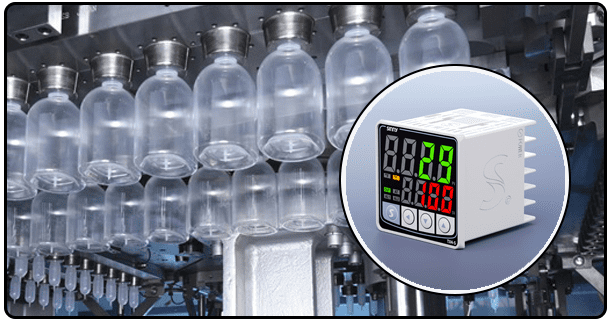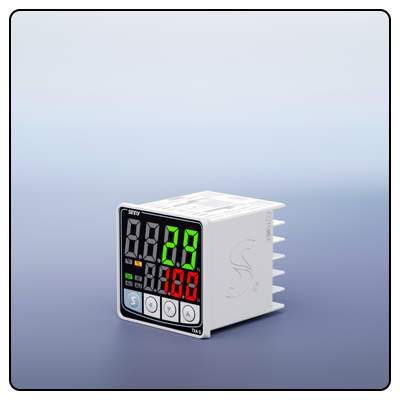Top Features to Consider in a Temperature Controller
To make an informed decision, understand which features should be prioritized when purchasing a temperature controller, including control methods, sensor compatibility, output types, user interfaces, communication protocols, advanced features, and environmental considerations.
1. Introduction
Temperature controllers are essential tools used by various industries to maintain precise temperatures at precise levels. To ensure peak performance and efficiency, choosing an effective controller with all the necessary features is vitally important - in this article, we outline some top features to keep in mind when purchasing one.
2. Control Method
Below are different control methods:
* On/Off Control: This simple approach to temperature regulation utilizes on/off switching to achieve desired levels, making it ideal for applications where the precision of control is less critical.
* Proportional Control: This approach adjusts output based on variations between setpoint and actual temperature; providing more precise temperature management than On/Off control.
* PID (Proportional-Integral-Derivative) Control: PID control combines proportional, integral, and derivative adjustments to provide precise control for applications requiring high accuracy and stability. This approach to automation makes the perfect addition.
Importance:
Knowledge of different control methods is vital when selecting an optimal controller for any given application, like PID controllers used for chemical processing or laboratory environments where maintaining consistent temperatures is of primary concern.
3. Sensor Compatibility
Different Types of Sensors (Tower Sensors, Thermocouples, etc.):
* Thermocouples have become popular because of their wide temperature range and fast response time - perfect for high-temperature applications.
* RTDs (Resistance Temperature Detectors) offer high accuracy and stability, making them perfect for applications requiring precise temperature measurements.
Importance:
Selecting a temperature controller that works well with your sensors is critical regarding the accuracy and reliability of temperature measurements; using RTD sensors with compatible temperature controllers will guarantee high-precision temperatures in temperature-sensitive processes such as food manufacturing.
4. Output Types
Types of Outputs:
• Electromechanical Relays: These are suitable for switching high-power loads but have a limited lifespan due to mechanical wear.
* Solid State Relays (SSRs): SSRs provide longer lifespan and faster switching than their electromechanical counterparts, making them suitable for applications requiring frequent switching.
* Analog Outputs: These continuous signals offer variable control applications such as heating elements.
Importance: The output required depends upon both your application and the load being controlled; typically, SSRs are best suited to applications involving frequent switching frequencies, while electromechanical relays might better suit less frequent ones.
5. User Interface
Types of Interfaces:
* Digital Displays: These provide clear and precise temperature readings and are easy to read.
* Touchscreen Interfaces: Touchscreen interfaces provide intuitive control and effortless navigation through settings.
* Keypads: Keypads provide an efficient and effortless method for entering settings and controlling temperatures.
Importance:
An accessible temperature controller must feature user-friendly features that are easy for its intended target market to use. Touchscreens may prove especially handy in fast-changing environments, while digital displays offer better monitoring capability.
6. Communication Protocols
Types of Protocols:
* Modbus: A widely used protocol that allows communication between devices in industrial environments.
* Ethernet provides fast communications suitable for networked systems.
* RS-485: An industry standard protocol for long-distance communication in industrial settings.
Importance:
Communication protocols are crucial when connecting temperature controllers with other systems or devices, like Modbus in industrial automation, providing seamless interaction between controllers and other equipment.
7. Advanced Features
Key Features:
* Autotuning: Automatically adjusts the PID parameters for optimal performance.
* Adaptive Control: Real-time control parameter adjustments based on process condition changes.
*Remote Monitoring: Allows remote temperature controller monitoring and management from another location.
Importance:
Advanced features enhance the functionality and efficiency of temperature controllers. Autotuning enables an effortless setup process, while remote monitoring adds convenience and flexibility in managing systems.
8. Environmental Considerations (or Factors):
* Operating Temperature Range (OTR): A controller may operate effectively and efficiently.
* Humidity Resistance: A controller's ability to perform in humid environments.
* Dust and Water Protection (IP Ratings): Indicates the level of protection from dust and water intrusion into an enclosed environment.
Importance:
Selecting a temperature controller that suits the operating environment is critical regarding longevity and reliability, such as selecting one with a high IP rating suited for environments where dust or liquid exposure is commonplace.
9. Conclusion
Selecting an optimal temperature controller requires considering various features that affect its performance and suitability for specific applications. By understanding its control methods, sensor compatibility, output types, user interfaces, communication protocols, advanced features, and environmental considerations, you can make an informed decision that ensures optimal efficiency and performance.
- What is a Temperature Control System and Why Do You Need It
- Temperature Controller vs Thermostat: What’s the Difference























